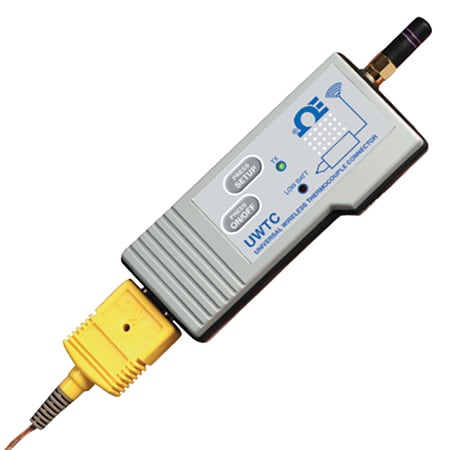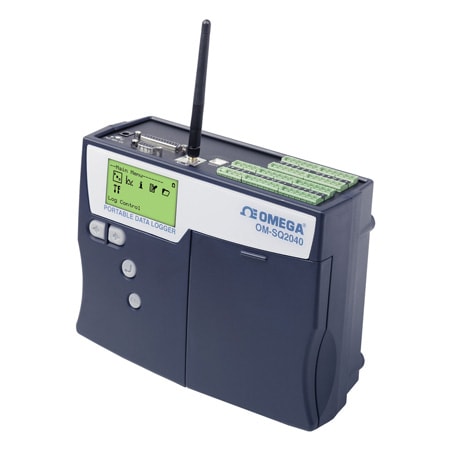When choosing a data logger the following parameters should be considered.
Input Signal
OMEGA offers data loggers that are compatible with most types of signals. Some data loggers are dedicated to a certain input type while others are programmable for different types of inputs. OMEGA offers a wide range of data loggers for several types of signals, including thermocouple, sound, pH, pressure and many more (see the “Types of Signal” for a list).
Number of Inputs
Data Loggers are available in both single and multi-channel designs. A 32 channels data logger such as OMEGA OM-SQ2040 Series is capable of handling multiple inputs.
Size
In many applications space is a limitation. In those cases the size of the data logger may be a critical selection parameter. OMEGA’s OM-CP family of data loggers are extremely compact and include models for most input types.
Speed/Memory
In comparison to real-time data acquisition systems, data loggers generally have low sample rates. This is because they store data in internal memory which is limited. The higher the data rates the more memory required. Therefore when specifying a data logger it is important to determine the sample rate and the sample duration which can be used to calculate the required memory. For example, If an application requires sample rates of 1 per second and the test must last one hour, the data logger must be able to store 3600 samples(1 sample/sec x 1 hour x 3600 seconds/hour).
Real-Time Operation
In some applications it may be desirable to display the data being collected in real time on a computer. Certain data loggers such as OMEGA’s OM-CP family support this feature.
Key Aspects to Consider when Choosing a Data Logger
- Input Signal
- Number of Inputs
- Size
- Speed/Memory
- Real-Time Operation
Why Choose a Data Logger Over Other Types of Data Collection Instruments?
Three types of instruments are commonly used for collecting and storing data. They are 1)Real-Time Data Acquisition Systems, 2)Chart Recorders and 3)Data Loggers.
Data loggers are normally more economical than chart recorders. They offer more flexibility and are available with a greater variety of input types. Most data loggers collect data which may be directly transferred to a computer. Although this option is available with some recorders, it normally adds significant expense to the recorder price.
Data acquisition systems offer a great deal of flexibility and are certainly attractive when high sample rates are required, however, since they require connection or installation into a computer, the computer must also be present and active when collecting the data. Data loggers can collect data independently of a computer. Data is normally collected in non-volatile memory for later download to a computer. The computer does not need to be present during the data collection process. This makes them ideally suited for applications requiring portability.

Choosing the Right Data logger

Wireless Thermocouples
These wireless transmitters measure different sensor inputs, including but not limited to pH, RTD, relative humidity. The data transmission is performed via wireless to a computer or a network.

Miniature Single Input Data Loggers
Miniature single input data loggers are generally low cost loggers dedicated to a specific input type. These types of data loggers are often used in the transportation industry. A typical application would be to include a temperature data logger in a shipment of food products to ensure that the food temperature does not exceed acceptable limits. In addition to temperature miniature data loggers are available for a large variety of input types.

Fixed Mount Multi-Channel Data Loggers
Fixed input loggers have a fixed number of input channels which are generally dedicated for a specific type of input. OMEGA offers fixed input data loggers ranging from one to 8 channels.

Handheld Multi-Channel Data Loggers
Handheld multi-channel loggers are commonly used in applications where the data logger is to be carried from one location to another. They are also commonly used in benchtop or laboratory environments. In addition to storing data internally some models even contain on board printers which can produce an immediate hardcopy of the data.



